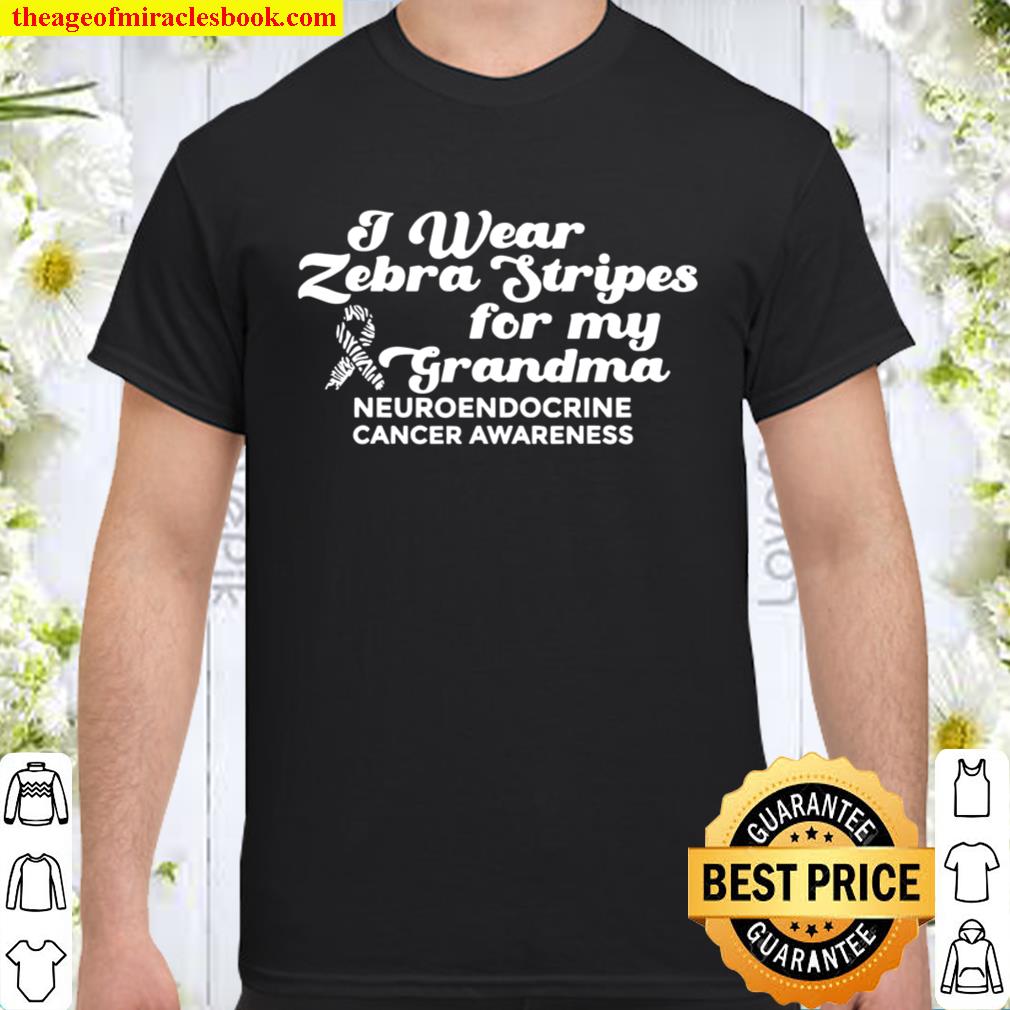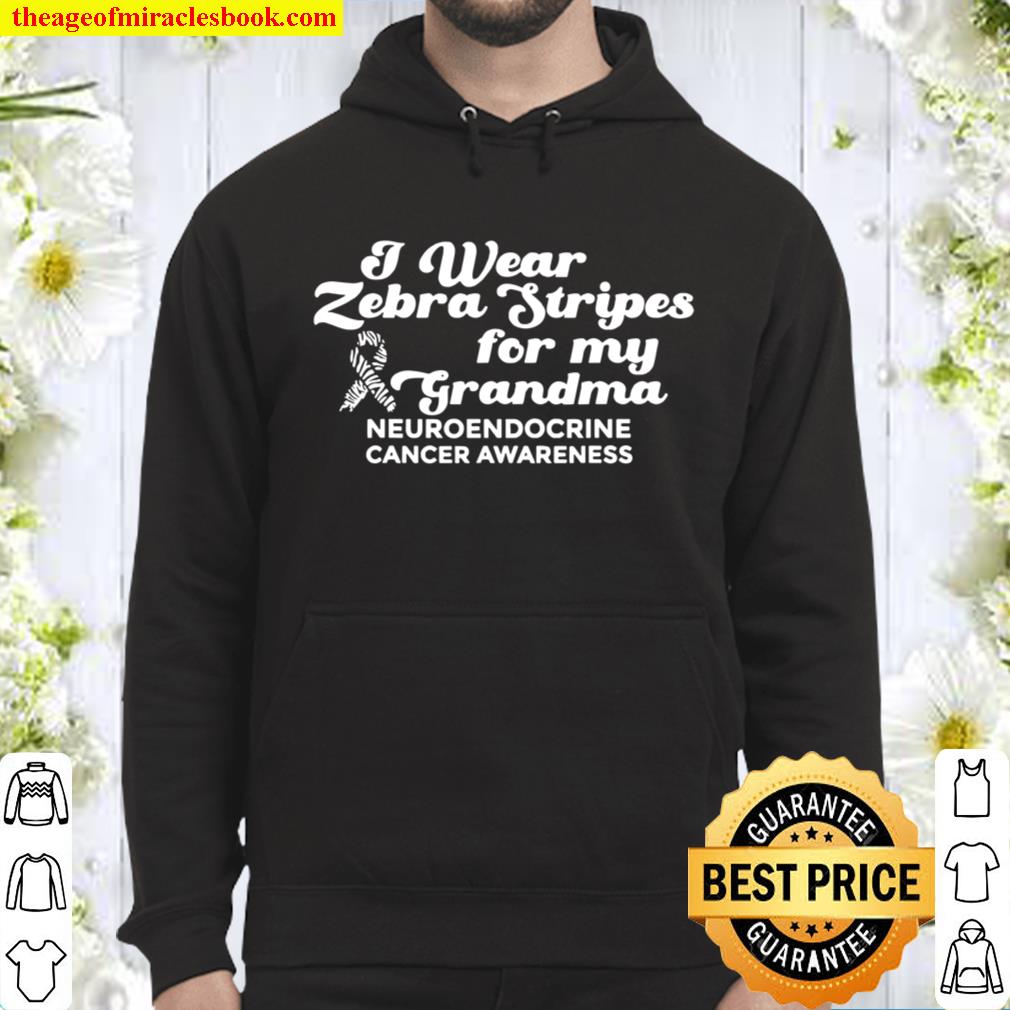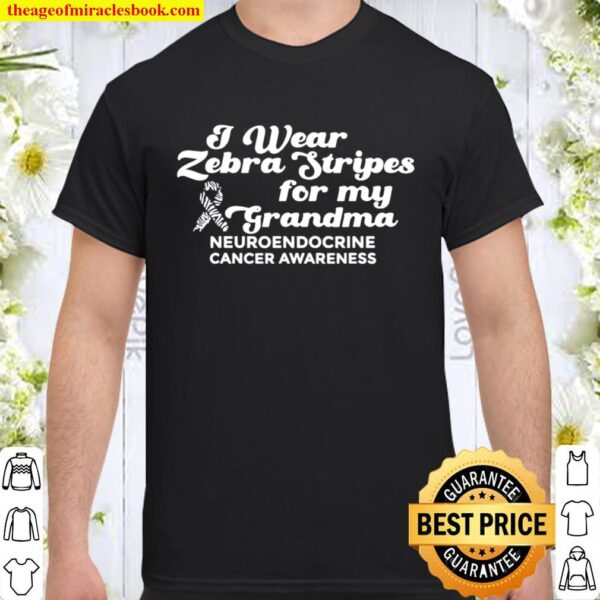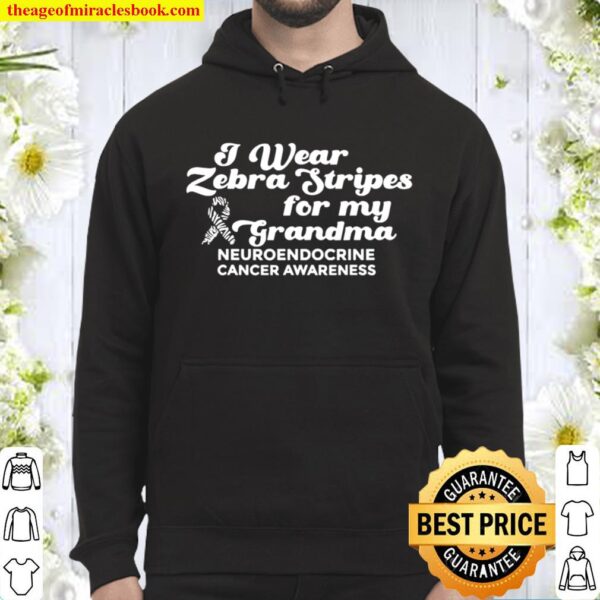I Weat Zebra Stripes Dor My Grandma Neuroendocrine Cancer Awareness Survivor Warrior limited Shirt, Hoodie, Long Sleeved, SweatShirt
Size Guide
Size Guide
Classic Men's T-Shirt
| Size |
Length |
Width |
| S |
28 in |
18 in |
| M |
29 in |
20 in |
| L |
30 in |
22 in |
| XL |
31 in |
24 in |
| 2XL |
32 in |
26 in |
| 3XL |
33 in |
28 in |
| 4XL |
34 in |
30 in |
| 5XL |
35 in |
32 in |
| Size |
Length |
Width |
Sleeve |
| S |
25.5 in |
17.25 in |
13.25 in |
| M |
26 in |
19.25 in |
14 in |
| L |
27 in |
21.25 in |
14.75 in |
| XL |
28 in |
23.25 in |
15.75 in |
| 2XL |
28.5 in |
25.25 in |
16.75 in |
| 3XL |
29 in |
27.25 in |
17.5 in |
Men's V-neck T-Shirt
| Size |
Length |
Width |
| S |
27.5 in |
18 in |
| M |
28.75 in |
20 in |
| L |
29.75 in |
22 in |
| XL |
30.75 in |
24 in |
| 2XL |
32 in |
26 in |
Women V-neck T-shirt
| Size |
Length |
Width |
| S |
25.5 in |
17.25 in |
| M |
26 in |
19.25 in |
| L |
27 in |
21.25 in |
| XL |
28 in |
23.25 in |
| 2XL |
28.5 in |
25.25 in |
Men's Long Sleedved T-Shirt
| Size |
Length |
Width |
Sleeve |
| S |
27.5 in |
18 in |
31.75 in |
| M |
28.75 in |
20 in |
33.5 in |
| L |
29.75 in |
22 in |
35.25 in |
| XL |
30.75 in |
24 in |
36.75 in |
| 2XL |
32 in |
26 in |
38.25 in |
Women's Long Sleedved T-Shirt
| Size |
Length |
Width |
Sleeve |
| S |
25.25 in |
16 in |
30.25 in |
| M |
26.25 in |
17 in |
31.25 in |
| L |
27.25 in |
18.5 in |
32.75 in |
| XL |
28 in |
19.5 in |
34.25 in |
| 2XL |
28.5 in |
22 in |
35.25 in |
Premium Men's T-Shirt
| Size |
Length |
Width |
| S |
28 in |
18 in |
| M |
29 in |
20 in |
| L |
30 in |
22 in |
| XL |
31 in |
24 in |
| 2XL |
32 in |
26 in |
| 3XL |
33 in |
28 in |
| Size |
Length |
Width |
| S |
26.25 in |
16 in |
| M |
26.75 in |
16.75 in |
| L |
27.38 in |
17.75 in |
| XL |
28 in |
18.75 in |
| 2XL |
28.62 in |
19.75 in |
Men's Tank Top
| Size |
Length |
Width |
| S |
28 in |
18 in |
| M |
29 in |
20 in |
| L |
30 in |
22 in |
| XL |
31 in |
24 in |
| 2XL |
32 in |
26 in |
| Size |
Length |
Width |
| S |
25.25 in |
16.5 in |
| M |
26.25 in |
17.5 in |
| L |
27.25 in |
19 in |
| XL |
28 in |
20 in |
| 2XL |
28.5 in |
22.5 in |
Unisex Sweater
| Size |
Length |
Width |
Sleeve |
| S |
27 in |
20 in |
33.5 in |
| M |
28 in |
22 in |
34.5 in |
| L |
29 in |
24 in |
35.5 in |
| XL |
30 in |
26 in |
36.5 in |
| 2XL |
31 in |
28 in |
37.5 in |
| 3XL |
32 in |
30 in |
38.5 in |
| 4XL |
33 in |
32 in |
39.5 in |
| 5XL |
34 in |
34 in |
40.5 in |
Unisex Hoodie
| Size |
Length |
Width |
Sleeve |
| S |
27 in |
20 in |
33.5 in |
| M |
28 in |
22 in |
34.5 in |
| L |
29 in |
24 in |
35.5 in |
| XL |
30 in |
26 in |
36.5 in |
| 2XL |
31 in |
28 in |
37.5 in |
| 3XL |
32 in |
30 in |
38.5 in |
| 4XL |
33 in |
32 in |
39.5 in |
| 5XL |
34 in |
34 in |
40.5 in |
Kid T-tshirt
| Size |
Length |
Width |
Sleeve |
Note |
| XS |
20.5 in |
16 in |
13.5 in |
4-5 years |
| S |
22 in |
17 in |
14.5 in |
6-7 years |
| M |
23.5 in |
18 in |
15.5 in |
8-9 years |
| L |
25 in |
19 in |
16.5 in |
10-11 years |
| XL |
26.5 in |
20 in |
17.5 in |
12-13 years |
Kid Sweatshirt
| Size |
Length |
Width |
| XS |
19 in |
16 in |
| S |
21 in |
17 in |
| M |
22 in |
18 in |
| L |
24 in |
19 in |
| XL |
25 in |
20 in |
Manufacture date: 25 April, 2024Shipping date: 26 April, 2024Delivered: To 1 May, 2024 From 8 May, 2024









Morley –
Amazing shirt pattern, thank you for the product **i weat zebra stripes dor my grandma neuroendocrine cancer awareness survivor warrior shirt ** beautiful